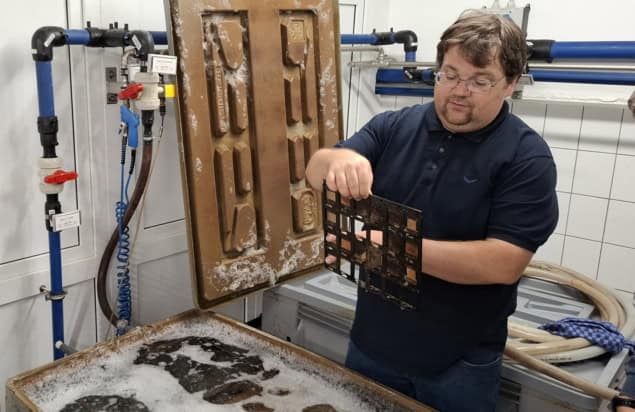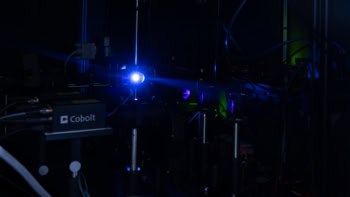Matin Durrani discovers a scientific connection to Helgoland that’s not to do with quantum physics

I’ve been immersed in quantum physics this week at the Helgoland 2025 meeting, which is being held to mark Werner Heisenberg’s seminal development of quantum mechanics on the island 100 years ago.
But when it comes to science, Helgoland isn’t only about quantum physics. It’s also home to an outpost of the Alfred Wegener Institute, which is part of the Helmholtz Centre for Polar and Marine Research and named after the German scientist who was the brains behind continental drift.
Dating back to 1892, the Biological Institute Helgoland (BAH) has about 80 permanent staff. They include Sebastian Primpke, a polymer scientist who studies the growing danger of microplastics and microfibres on the oceans.
Microplastics, which are any kind of small plastic materials, generally range in size from one micron to about 5 mm. They are a big danger for fish and other forms of marine life, as Marric Stephens reported in this recent feature.
Primpke studies microplastics using biofilms attached to a grid immersed in a tank containing water piped continuously in from the North Sea. The tank is covered with a lid to keep samples in the dark, mimicking underwater conditions.

He and his team periodically take samples from the films out, studying them in the lab using infrared and Raman microscopes. They’re able to obtain information such as the length, width, area, perimeter of individual microplastic particles as well as how convex or concave they are.
Other researchers at the Hegloland lab study microfibres, which can come from cellulose and artificial plastics, using electron microscopy. You can find out more information about the lab’s work here.
Primpke, who is a part-time firefighter, has lived and worked on Helgoland for a decade. He says it’s a small community, where everyone knows everyone else, which has its good and bad sides.
With only 1500 residents on the island, which lies 50 km from the mainland, finding good accommodation can be tricky. But with so many tourists, there are more amenities than you’d expect of somewhere of that size.



